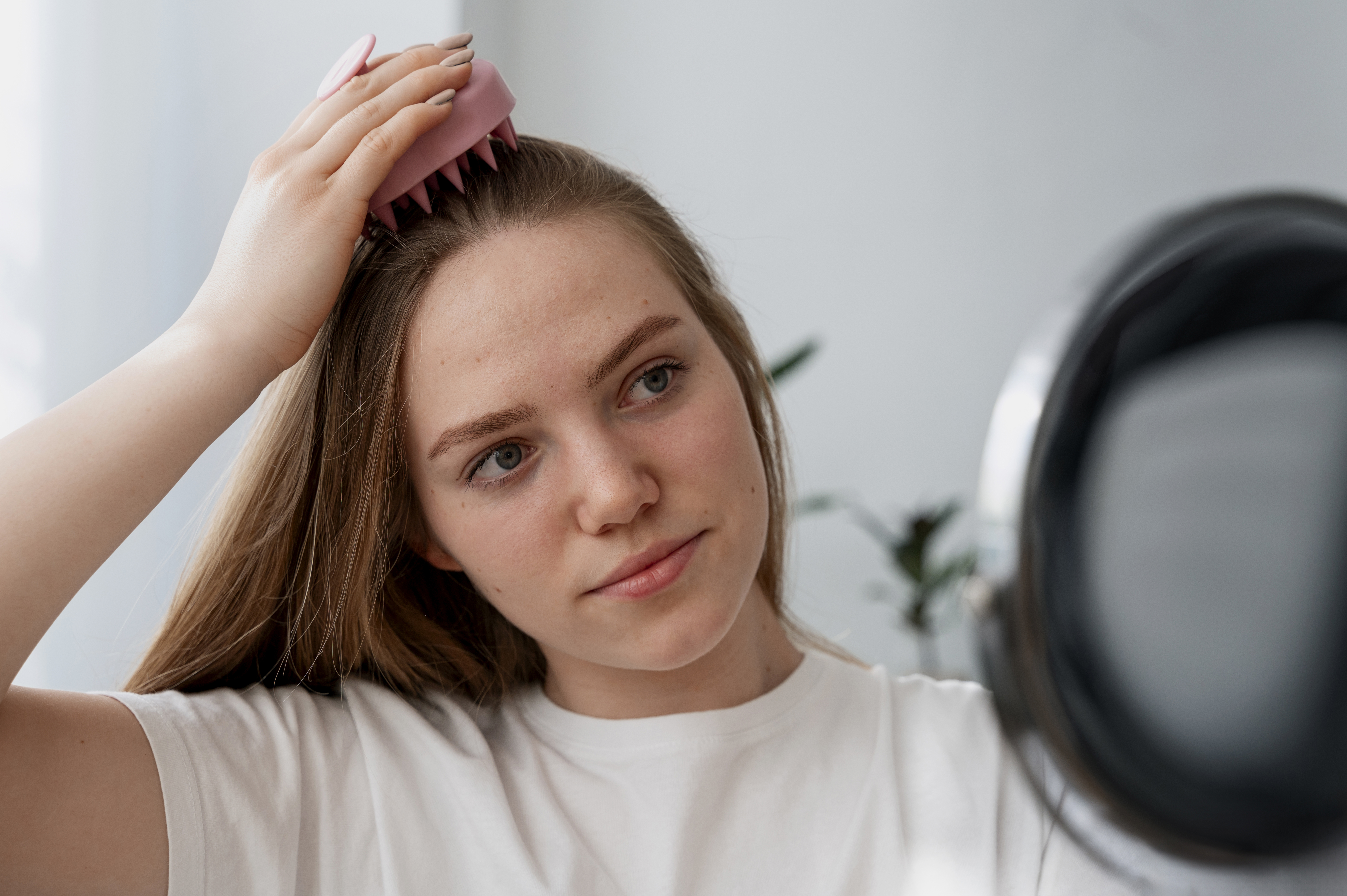Hair loss is a very personal experience that affects men and women not only physically but also emotionally. While in men it is often accepted as a natural part of aging, in women it can cause sadness, lower self-confidence, social withdrawal, and even a decrease in self-esteem. Because of this, many women who look for a permanent solution now see hair transplantation as the gold standard. Nevertheless, hair loss in women develops differently than in men, and the aesthetic expectations are not the same. In addition, the surgical plan must always be customized for each patient. Therefore, choosing a clinic with real expertise and proven experience in female hair transplantation is essential, since it is the key to achieving natural and life-changing results. To understand why women, require a specialized approach to hair transplantation, it is important to first look at how hair loss develops. Women often experience density loss along the crown and mid-scalp, while the front hairline is usually preserved. However, the overall volume decreases, creating a “thinning” appearance. This change is not only visual but also emotionally significant, as thick and healthy hair is strongly associated with femininity. Because hair loss in women is more widespread and less predictable, surgical planning requires a highly precise and artistic approach. At Long Hair Center, our surgeons carefully evaluate each patient’s hair density, donor area quality, and long-term expectations to design solutions that enhance both volume and a natural appearance. Hair loss in women is a much more complex process compared to men, and it can be influenced by many different factors. In most cases, it is not caused by a single reason but rather by a combination of several elements. Women may find themselves affected by one or more of the following causes: Women’s hair health is directly connected to hormone levels. Conditions such as thyroid disorders, menstrual cycles, pregnancy, menopause or the use of birth control pills can all disrupt hormonal balance. In particular, a decrease in estrogen may lead to hair thinning and shedding. Genetic predisposition plays a significant role in hair loss. If women in the family, whether on the mother’s or father’s side, have experienced hair loss, the same issue may appear in future generations. Female-pattern hair loss usually presents as a reduction of density at the crown and mid-scalp areas. Severe stress, traumatic events, or depression are among the most important triggers of hair loss. Stress disrupts the natural growth phase of hair and can lead to a condition called telogen effluvium, which causes sudden but temporary shedding. Hair follicles need nutrients such as protein, iron, zinc, vitamin B12, and vitamin D to stay strong. Poor or unbalanced nutrition weakens the hair, making it brittle and more prone to breakage. Iron deficiency is one of the most common causes of hair loss in women. During pregnancy, higher hormone levels make the hair look fuller and healthier. However, once the hormones return to normal after childbirth, many women experience sudden and heavy hair shedding. Although this condition is usually temporary, it can sometimes lead to permanent thinning. Certain medications (for example, chemotherapy, antidepressants, or blood thinners), chronic illnesses, tightly pulled hairstyles, or frequent exposure to heat and chemical treatments can also contribute to hair loss. One of the biggest differences between male and female hair transplantation is the donor area. While the hair at the nape and sides of the scalp in men is usually resistant to shedding and provides a reliable donor source, in women, thinning may sometimes spread even to these regions. Therefore, a detailed analysis is of critical importance. At Long Hair Center, every female patient undergoes a comprehensive hair analysis and thorough examination before the operation. With the help of advanced diagnostic tools, we carefully check whether the donor area contains stable, strong, and lifelong grafts. Consequently, the foundation of a successful female hair transplant lies in this careful preparation process. In female hair transplantation, there are two techniques that are truly effective and aesthetically suitable: FUE and DHI. These modern methods are minimally invasive, leave no visible scars, and most importantly, they can be performed without the need for a full shave. This feature is a great advantage for women. In the FUE technique, follicular units are extracted one by one from the donor area and then implanted into thinning regions. For women, the biggest benefit is that the procedure can usually be done with partial shaving. These small shaved areas can be easily hidden under long hair. As a result, patients can keep their hairstyle and return to daily life with minimal interruption. At Long Hair Center, FUE procedures are carried out with the highest precision. Each graft is handled carefully, which ensures natural growth, improved density, and a seamless blend with the existing hair. DHI takes the FUE method one step further by using a special implanter pen to place the grafts directly into the scalp. Since there is no need to create channels beforehand, the angle, depth, and direction of each follicle can be fully controlled. For women, this level of precision is especially valuable, because the transplanted hair grows in harmony with the natural strands, resulting in a soft, feminine, and natural look. Long Hair Center is a pioneer in the DHI technique and offers women excellent results with minimal recovery time. While male patients often aim to restore a receding hairline or cover bald spots at the crown, women usually have different priorities: At Long Hair Center, we carefully plan each procedure with these goals in mind. Grafts are strategically placed into thinning areas so that every follicle contributes to overall density and volume, ensuring a natural and harmonious result. 1 – Consultation and Analysis 2 – Surgical Planning 3 – Operation Day 4 – Recovery and Hair Growth Hair transplantation, especially with FUE and DHI techniques, offers natural and permanent results. However, maintaining hair health after the operation is just as important as the transplant itself, since it helps protect and support the outcome. For newly transplanted follicles to remain strong, healthy, and long-lasting, it is recommended to adopt the following habits: Hair follicles are living structures and depend directly on nutrients. Proteins, omega-3 fatty acids, zinc, iron, vitamin B12, and vitamin D all play a crucial role in strengthening hair. Therefore, regularly consuming red meat, fish, leafy green vegetables, nuts, and legumes helps maintain healthy hair. In some cases, nutrition alone may not be sufficient. With a doctor’s recommendation, supplements such as biotin, zinc, vitamin D, or multivitamins can support stronger and faster hair growth. This is particularly helpful during the first year after a hair transplant, as it makes the recovery process more effective. Patients should not skip their follow-up examinations, especially within the first year after transplantation. Professional monitoring ensures that both the healing process and long-term hair health are managed properly. One of the most important factors for long-term healthy hair is choosing the right clinic. At Long Hair Center, our team specializes exclusively in DHI and FUE techniques and provides personalized treatment planning. Moreover, we offer detailed guidance on nutrition, supplements, and hair care after the operation, helping our patients enjoy strong and healthy hair for many years to come. For women, a hair transplant is a major step both aesthetically and psychologically. However, the success of the procedure does not depend only on the technique applied; it is also closely related to the care shown by the patient during the first days. Especially with FUE and DHI methods, the first week is a critical period for the transplanted follicles to adapt to their new place. Therefore, here are the most important points to consider: During the first 7–10 days after the operation, no pressure should be applied to the transplanted area. For this reason, the safest position is to sleep on your back with your head slightly elevated. Using a high pillow or a neck pillow not only reduces swelling but also prevents damage to the follicles. The first wash is usually performed at the clinic by specialists. In the following days, however, hair should be washed gently with the special shampoos recommended by the doctor. It is essential to avoid rubbing the scalp, touching it with nails, or washing with strong water pressure. Instead, simply spreading the foam with light touches is sufficient. Newly transplanted follicles are highly sensitive to direct sunlight. Therefore, when going outdoors in the first weeks, it is advisable to wear a hat. Nevertheless, it should be loose-fitting and soft so that it does not put pressure on the head. Prolonged sun exposure may negatively affect the healing process. For at least 2–3 weeks after the operation, heavy physical activities should be avoided. Since excessive sweating, increased blood circulation, and the risk of impact can harm the follicles, intense exercise is not recommended. On the other hand, light activities such as walking can be done with the doctor’s approval. Both smoking and alcohol disrupt blood circulation and reduce the oxygen supply to the follicles. Therefore, they must be strictly avoided during the first weeks after surgery. Moreover, in the long term, it is strongly recommended to limit their use as much as possible. Antibiotics, painkillers, or special sprays prescribed after the operation should be used regularly. Stopping the medication on your own or trying different products may put the success of the transplant at risk. At Long Hair Center, patients receive a detailed post-operative care guide. In addition, regular check-ups and professional support during the first days make patients feel safe. In this way, they benefit not only from expert care during the operation itself but also from professional guidance throughout the recovery phase. For women, the most important decision in their hair transplant journey is choosing the right clinic. At Long Hair Center, we combine medical expertise with an aesthetic perspective to deliver outstanding results. At Long Hair Center, women not only regain their hair density after transplantation, but they also achieve lasting confidence. Since the transplanted follicles are permanent, they continue to grow naturally for a lifetime. Moreover, the hair can be cut, dyed, and styled just like normal hair, which means patients enjoy complete freedom in their daily routines. In addition, the emotional benefits are just as important as the physical changes. Many women describe hair transplantation as a life-changing step, because they no longer feel the constant stress of hiding thinning areas. Instead, they begin to feel like themselves again, with renewed self-esteem and peace of mind. For women, hair transplantation is not only a medical procedure; it is also the restoration of confidence, femininity, and overall quality of life. Since women have different hair loss patterns, unique aesthetic goals, and a greater need for privacy, female hair transplantation always requires true expertise. At LONG HAIR CENTER, we address these special needs with advanced FUE and DHI techniques. From the very first consultation to the final strand of hair, every step is planned with precision, sensitivity, and an artistic perspective. For women struggling with thinning hair, the path to fuller, healthier, and more beautiful hair begins with choosing the right clinic. When it comes to expertise, technology, and proven results, LONG HAIR CENTER is the most reliable choice for female hair transplantation.Why is Hair Loss Different in Women?
Causes of Hair Loss in Women
1-Hormonal Changes
2-Genetic Factors
3-Stress and Psychological Factors
4-Nutritional Deficiencies
5-Postpartum Period
6-Other Medical and External Factors
The Importance of Donor Area Evaluation
Why Are FUE and DHI Ideal for Women?
• FUE
• DHI
Women’s Expectations: Density, Volume, and Naturalness
Step-by-step: Female Hair Transplant at Long Hair Center
The patient’s scalp and donor area are examined in detail, and expectations are discussed while the medical history is reviewed. Based on this information, the most suitable aesthetic plan is created.
According to the chosen method (FUE or DHI), the graft distribution is mapped. Unlike in men, grafts for women are often spread over a wider area to create the appearance of greater density.
The patient is received in a comfortable, modern setting, and local anesthesia ensures a largely painless experience. With unshaven techniques, only small donor areas are trimmed, so the patient’s hairstyle can be preserved.
Recovery is usually fast, and most women can return to daily life within a few days. Transplanted hairs typically shed at first, but new hair growth usually begins around months 4–5. By month 7, noticeable improvement is seen, and final results appear between 12 and 18 months.How to Maintain Long-term Hair Health
1 – Balanced Nutrition
2 – Vitamins and Supplements
3 – Hair-friendly Habits
4 – Regular Check-ups and Professional Support
5 – The Long Hair Center Difference
The First Days After Hair Transplant: What Should You Pay Attention To?
1 – Sleeping Position
2 – Hair Washing
3 – Sun Protection
4 – Avoiding Intense Exercise
5 – Alcohol and Smoking
6 – Following Medication and Instructions
7 – Patient Follow-up at Long Hair Center
Why Is Long Hair Center the Best Choice?
Recovery and Long-Term Results
Hair Transplantation in Women: More Than Just Surgery
Hair Transplant in Women: Differences and Special Needs



 Deutsch
Deutsch
 English
English
 français
français
 italiano
italiano
 Türkçe
Türkçe
 русский
русский
 한국어
한국어

